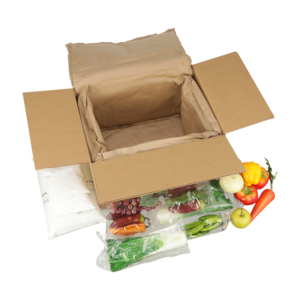[cmsmasters_row][cmsmasters_column data_width=”1/1″][cmsmasters_text]
Nigeria’s demand for fresh produce, seafood, and pharmaceuticals is rising, but perishable goods are highly vulnerable to spoilage during transit. Air freight offers the fastest solution, yet 35% of perishable shipments fail due to poor packaging, customs delays, or temperature fluctuations. For businesses exporting Nigerian-grown mangoes or importing vaccines, mastering air freight for perishables is critical to maintaining quality and profitability.
Bolbulk Cargo specializes in cold chain air logistics, ensuring perishables retain freshness from farm to fork or lab to patient. This guide dives into best practices for packaging, compliance, and cost management, with actionable insights tailored to Nigeria’s climate and infrastructure.
Key Challenges in Perishable Air Freight
- Temperature Control:
- Problem: Nigeria’s tropical climate accelerates spoilage.
- Solution: Use active cooling containers with IoT sensors (e.g., Envirotainer).
- Customs Delays:
- Problem: NAFDAC/SON inspections at Lagos airport add hours to transit.
- Solution: Pre-submit phytosanitary certificates and lab reports by using Bolbulk Cargo.
- High Costs:
- Problem: Air freight rates for perishables are 30% higher than general cargo.
- Solution: Consolidate shipments with other exporters to share space and costs.
Step-by-Step Guide to Shipping Perishables
1. Pre-Shipment Preparation
- Packaging:
- Use insulated boxes with gel packs or dry ice (IATA-compliant for dangerous goods).
- Label packages with “Perishable” and “Keep Refrigerated” in bold.
- Documentation:
- Obtain export certificates (e.g., NAFDAC for pharmaceuticals, SONCAP for frozen fish).
2. Choosing the Right Airline and Route
- Prioritize Direct Flights: Reduces handling and delays (e.g., Lagos to London Heathrow via British Airways).
- Partner with Cargo Airlines: Ethiopian Airlines and Qatar Airways offer dedicated perishable cargo services.
- Avoid Peak Seasons: Rates spike during holidays (e.g., Ramadan, Christmas).

3. Navigating Customs and Inspections
- Pre-Clearance: Submit airway bills, invoices, and certificates 72 hours before arrival.
- NAFDAC Fast-Track: Register perishables under the “Priority Goods” scheme for quicker checks.
- Avoid Penalties: Declare exact temperatures (e.g., “2–8°C”) to prevent confiscation.
Cost-Saving Tips for Perishable Air Freight
- Optimize Packaging Weight: Use lightweight materials like vacuum-sealed polyethylene.
- Leverage Free Trade Zones: Store goods in Lagos FTZ to reduce pre-shipment spoilage.
- Hedge Fuel Surcharges: Lock in rates during low-price cycles using Bolbulk’s fuel index tracker.
Future Trends in Perishable Air Logistics
- Smart Containers: Self-chilling units powered by solar energy.
- Blockchain Traceability: Track produce from farm to buyer via QR codes.
- Drone Deliveries for Last-Mile: Pilots in Lagos for urgent medical shipments.
FAQs
Q: Can I ship live animals via air freight?
A: Yes! Use IATA-compliant crates and obtain veterinary certificates. Learn more.
Q: How do I handle dry ice shipments?
A: Declare it under IATA Class 9 and limit to 200kg per container.
Need to Ship Perishables?
Get a Custom Quote
[/cmsmasters_text][/cmsmasters_column][/cmsmasters_row]

